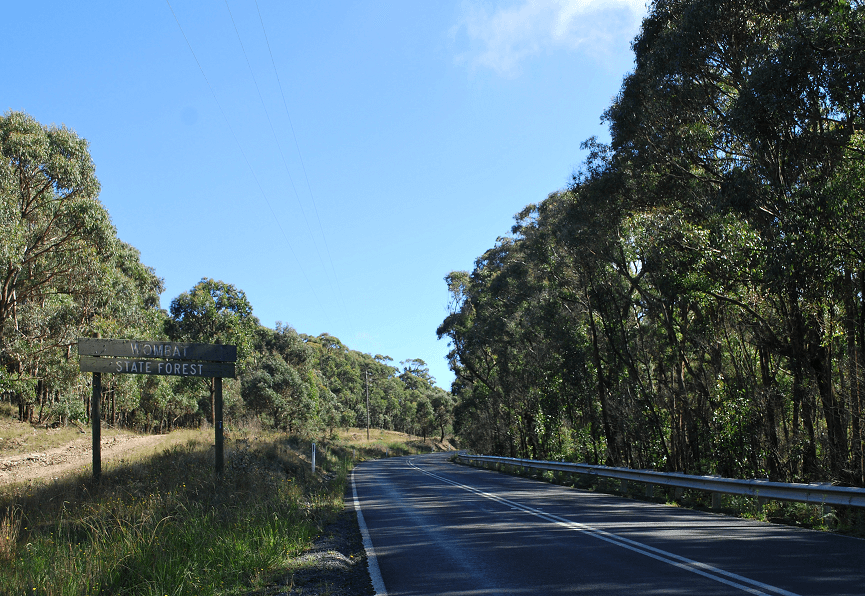The Bullarook, or Wombat, State Forest is situated 50 kilometres (31 mi) west of Melbourne, Victoria, Australia, between Woodend and Daylesford, at the Great Dividing Range. This forest covers approximately 70,000 hectares (170,000 acres) and sits on Ordovician or Cenozoic sediments. It was established in 1871 and is managed by the Department of Environment, Land, Water and Planning.
Notably, the Wombat State Forest is the only Australian initiative that practices community forestry, which is understood in an international context. Its management plan covers a range of areas, including the production of firewood and other forest products, protection of water supplies, conservation of biodiversity and landscape, cultural heritage, research, education, tourism, recreation, mineral exploration, mining, and grazing.
Recently, on 24 June 2021, the Andrews State Government declared that the Wombat State Forest will be added to the National Park register, granting it additional protections. The proposal to merge the nearby Lerderderg State Park and the Wombat State Forest would create the new Wombat-Lerderderg National Park, which would enjoy the highest level of protection against logging while maintaining sustainable ecotourism and protecting wildlife and the environment.

Before European settlement, the Dja Dja Wurrung peoples lived in the area that is now part of the state forest land. It is believed that the forest was much larger in the past than it is today.
In the mid-1800s, following the gold rush era, the forest land was extensively logged, especially after gold was discovered in Blackwood. The timber was used for a variety of purposes, such as lining mine shafts, as sleepers for tramways, fuel, electric poles, and heavy construction timbers. However, in 1860, the Land Act (Section 80) was introduced, prohibiting the slashing and clearing of trees. In 1871, the Wombat State Forest was established.
By 1884, there were 36 saw mills in operation in the Wombat and Bullarook Forests, and the wood was shipped to Melbourne and around Victoria. However, little or no regeneration occurred, resulting in a "ruined forest" as described by a late 1890s Royal Commission. The forest was closed to mining and logging for 50 years to allow regeneration.
In the late 1960s, effective regeneration had not occurred, and shelter wood logging was introduced, involving the removal of up to 80% of trees followed by a regeneration burn and final removal 10-20 years later. Pine plantations were established in areas at the western edge of the forest.
In the mid-1980s, a "Timber Industry Strategy" was implemented, which established sustainable yields for the forestry industry. The Wombat Forest's sustainable yield was set at historical sawlog license levels of around 70,000m3 per annum, with an additional 63,000 tonnes of waste going as woodchips. However, this led to concerns from the surrounding community.
In 2001, the local community published their own findings about the forest's sustainable management, which became an example of community involvement in a state-run management plan. In 2010, community groups raised fears that logging could resume in the forest after the State Government allocated logging licenses in western Victoria.


10 Dangerous Australian Animals You Need To Be Aware Of.
Deep Fried Aussie Prawns